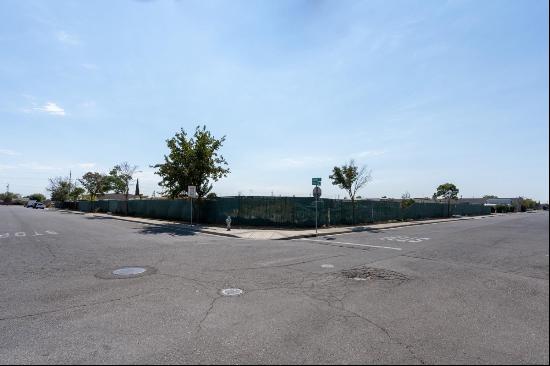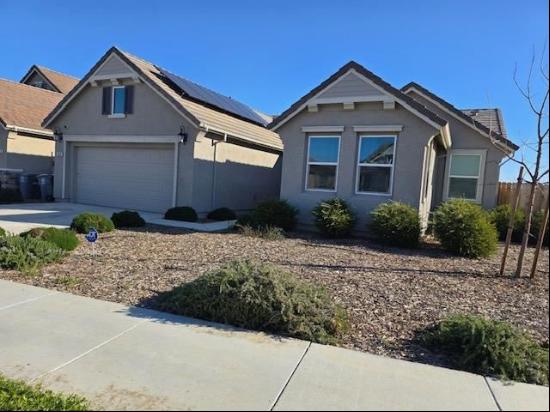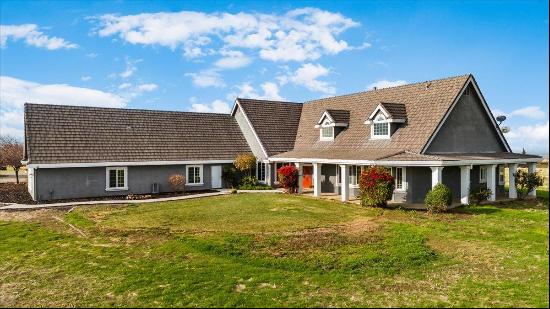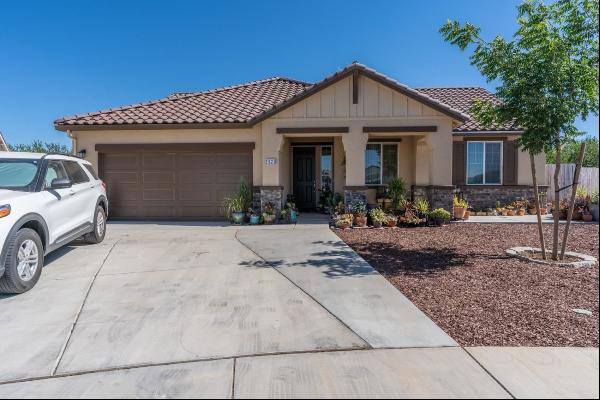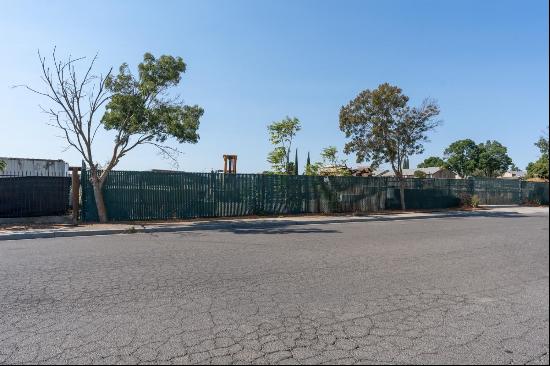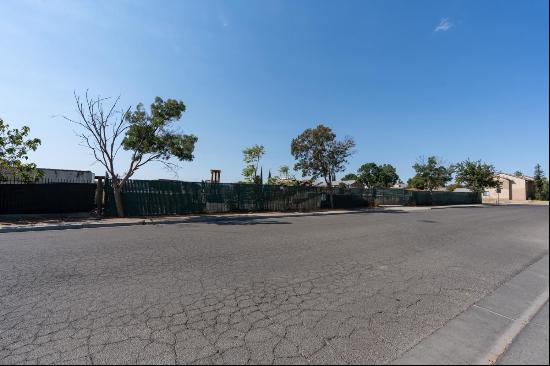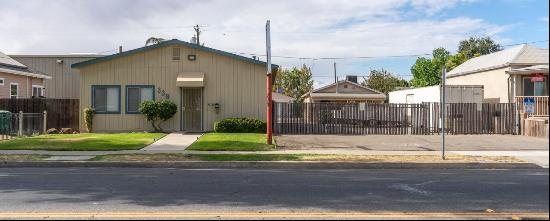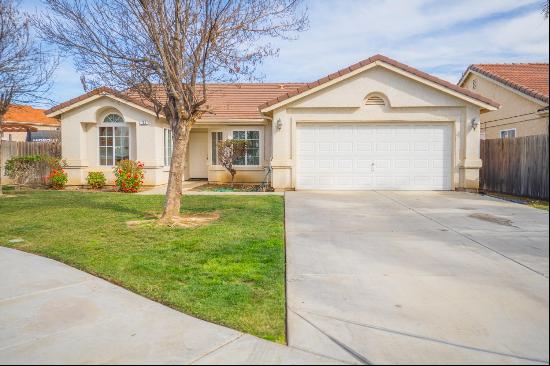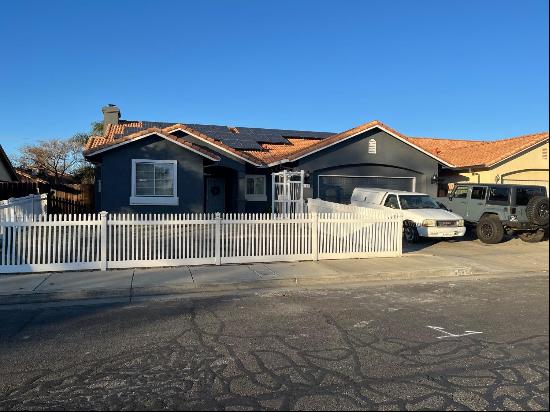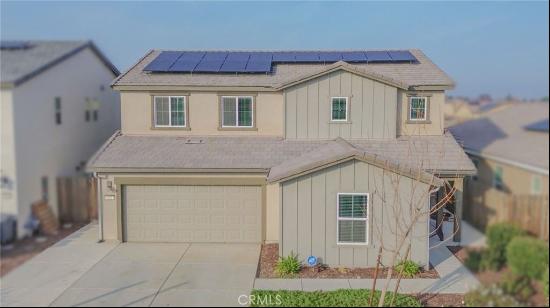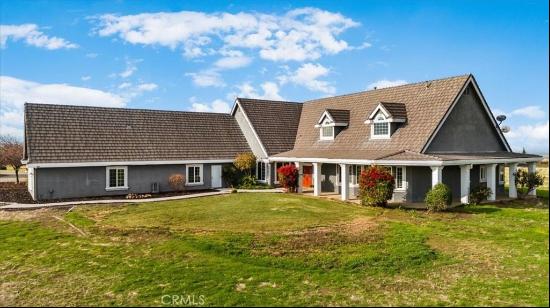
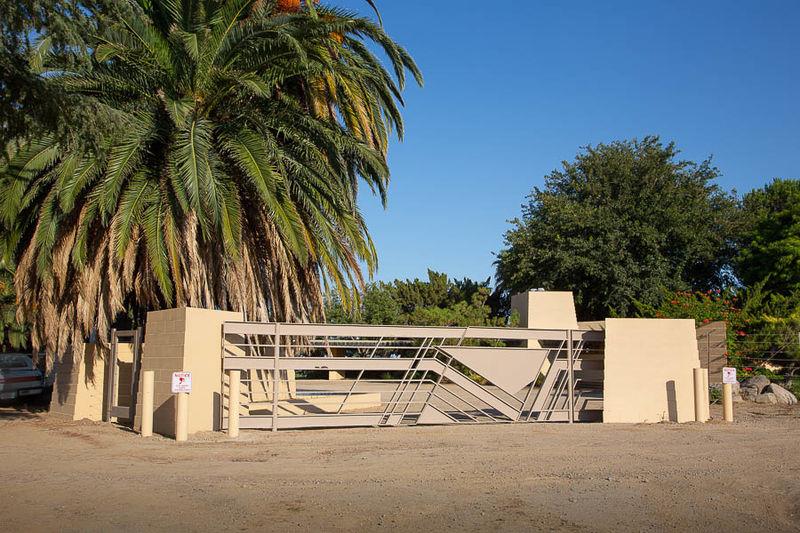

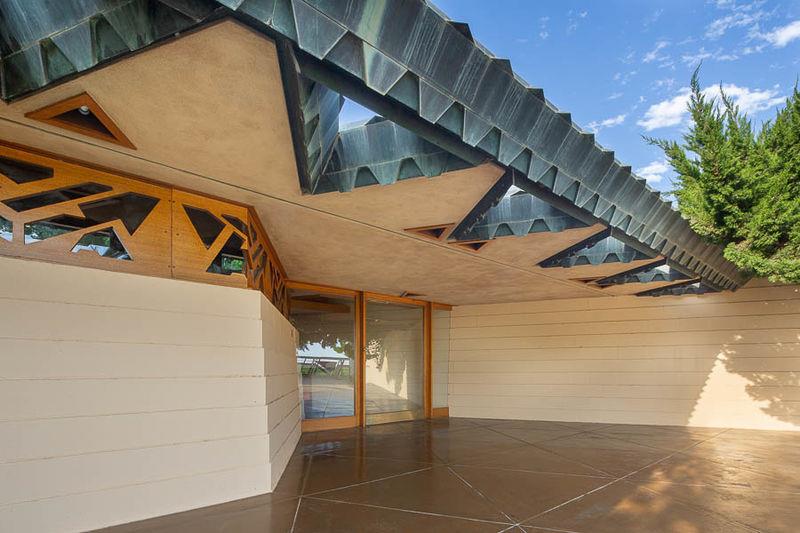
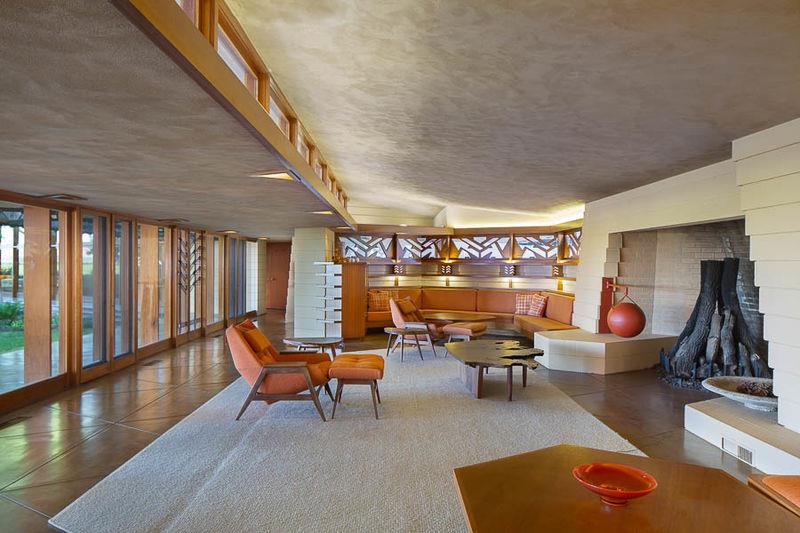

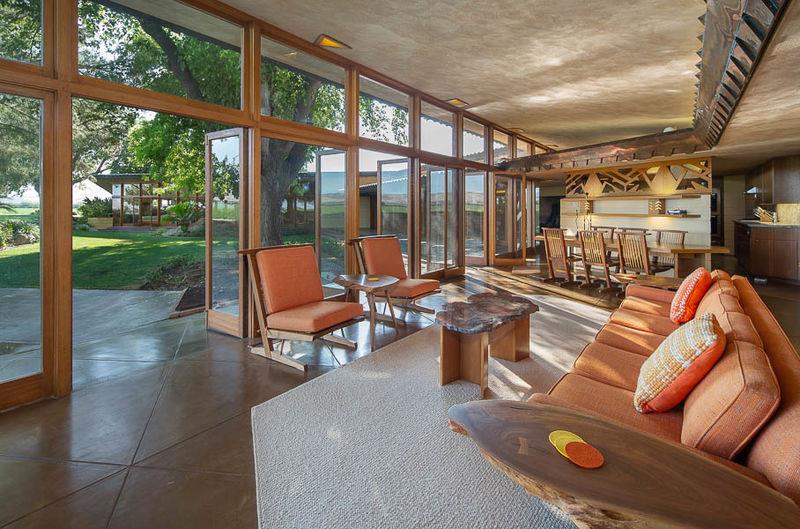

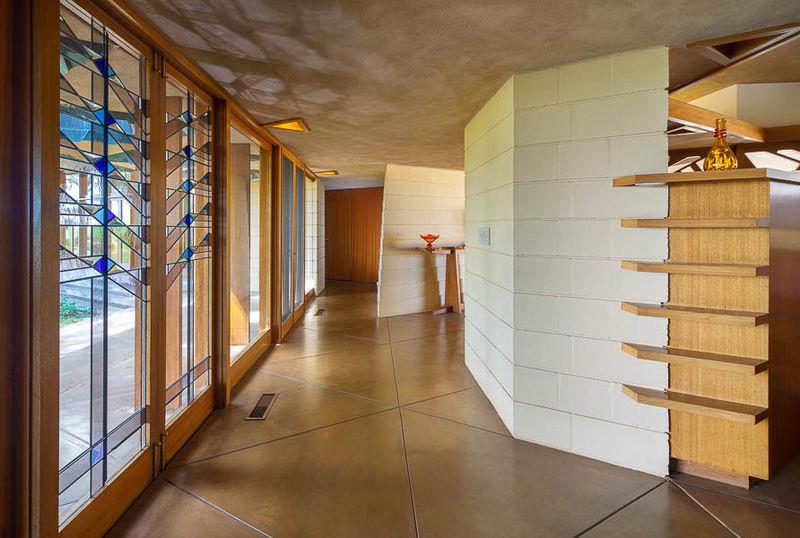

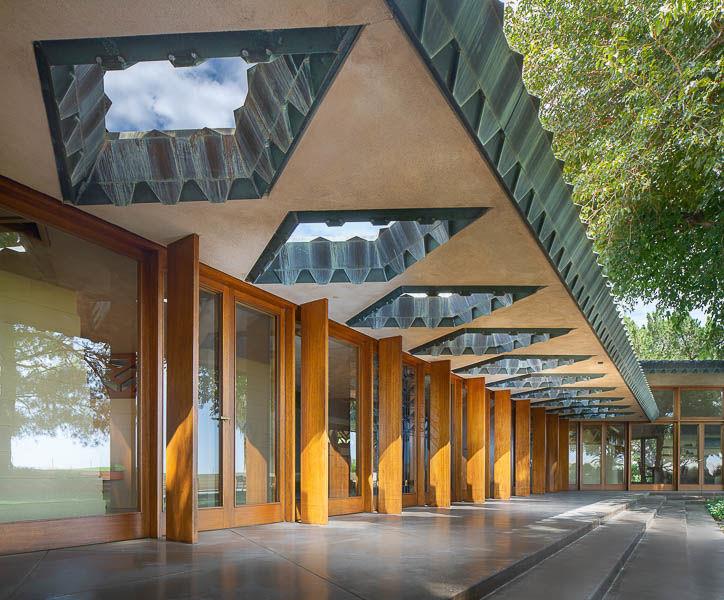



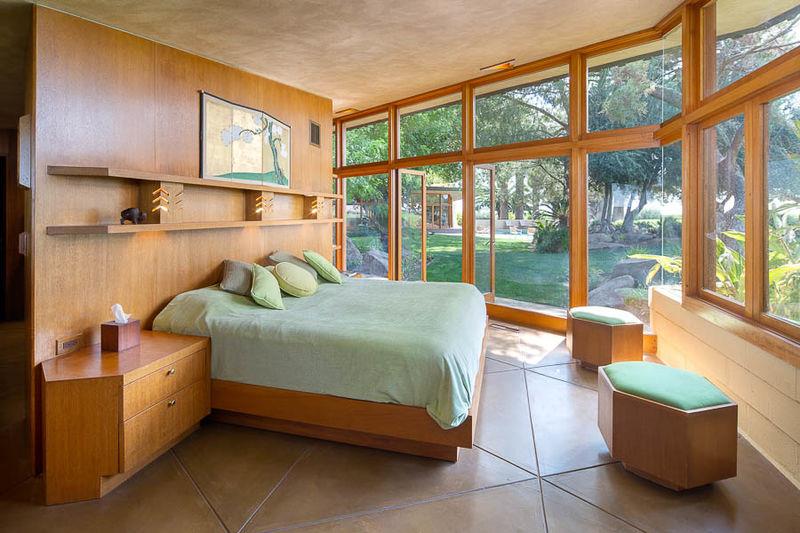
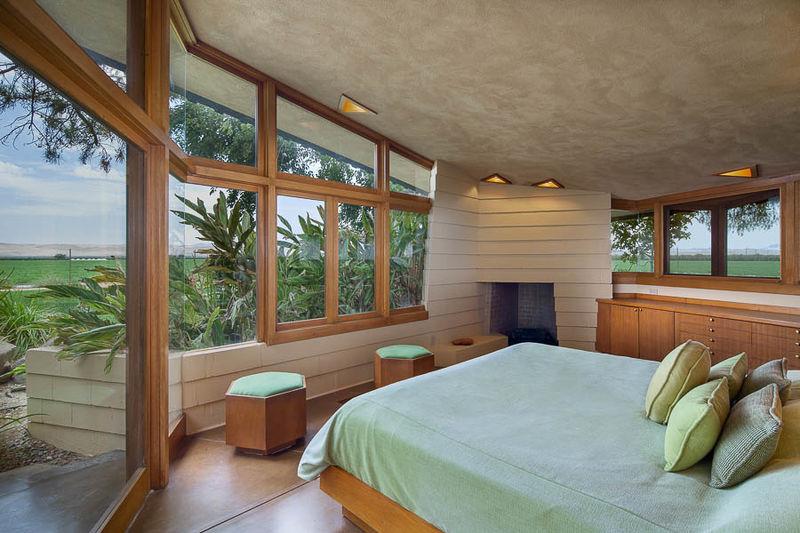

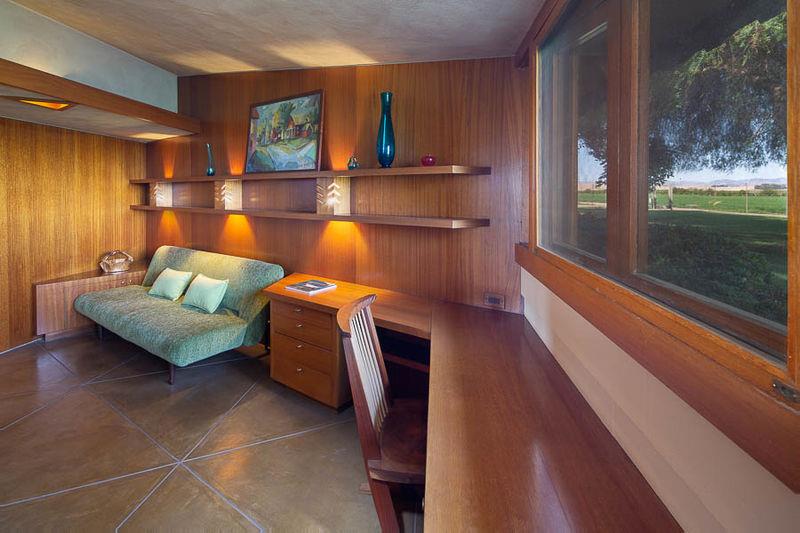
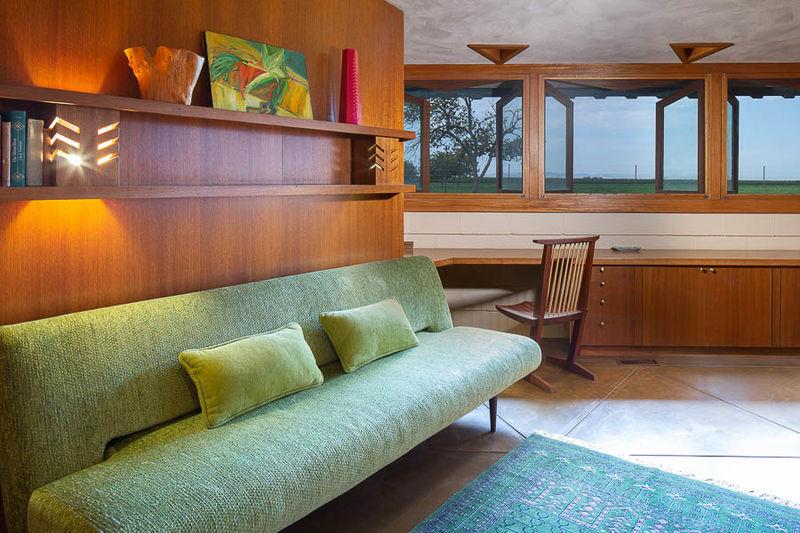

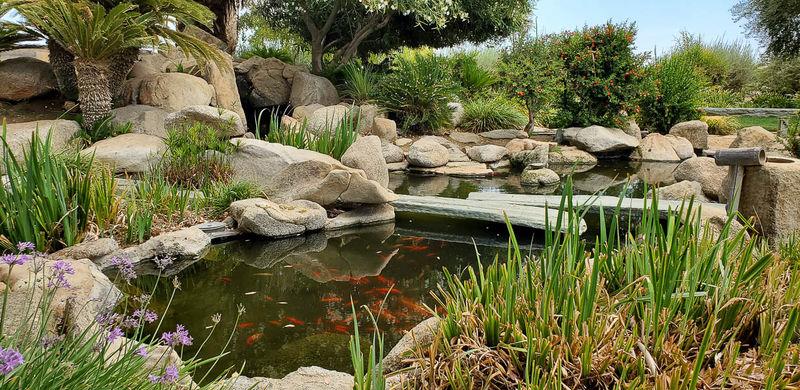
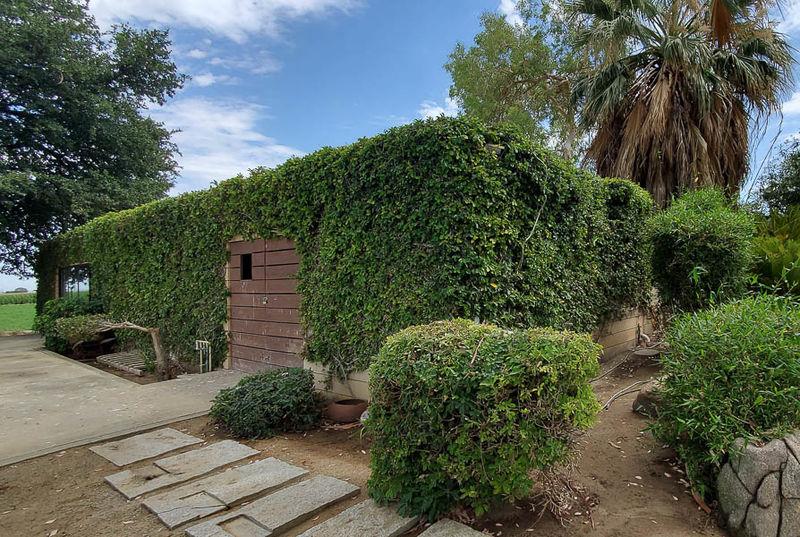
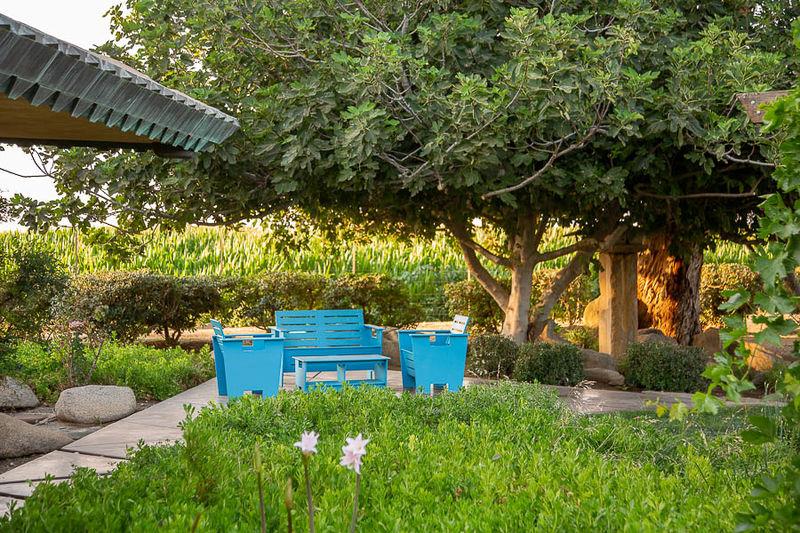
- For Sale
- GBP 3,282,692
- Build Size: 4,036 ft2
- Land Size: 3,310,559 ft2
- Property Style: Farmhouse
- Bedroom: 7
- Bathroom: 6
- Amenities: 3 Car Garage
For Sale
USD$4,250,000
In imagining the ideal setting for living a full, free, and rich life, Frank Lloyd Wright strove for an architecture where: “We have no longer an outside and an inside as two separate things. Now the outside may come inside, and the inside may and does go outside. They are of each other. Form and function thus become one in design and execution if the nature of materials and method and purpose are all in unison.” That this unity is achieved at Fawcett Farm cannot fully be conveyed by words and pictures, but only by direct experience.
Sited on 76 acres of land in California’s Central Valley that Buck Fawcett characterized to Wright as the most fertile agricultural land in the world, the residence and surrounding gardens afford an island of peace rising from the crops and merging with the distant mountains on the far horizon.
A multi-award winning world-class restoration and enhancements to the landscape, gardens, and security have been completed by the second owners in consultation with Eric Lloyd Wright, and overseen by Taliesin Associate architect Arthur Dyson. An inspiring and unique living environment now awaits your creative use.
The gated property includes: Main residence with open-plan living, dining and family areas, 7 bedrooms, 6 baths, kitchen, and service room/laundry, with fireplaces in the living room, family room and master bedroom. Additionally, there is a semi-attached small museum, a large detached workshop, swimming pool, Koi pond and Japanese garden.
Some more information on the this property can be found at California Preservation Awards website.
From Wikipedia:
Frank Lloyd Wright (June 8, 1867 – April 9, 1959) was an American architect, designer, writer, and educator. He designed more than 1,000 structures over a creative period of 70 years. Wright played a key role in the architectural movements of the twentieth century, influencing architects worldwide through his works and hundreds of apprentices in his Taliesin Fellowship. Wright believed in designing in harmony with humanity and the environment, a philosophy he called organic architecture. This philosophy was exemplified in Fallingwater (1935), which has been called “the best all-time work of American architecture”.
USD$4,250,000
In imagining the ideal setting for living a full, free, and rich life, Frank Lloyd Wright strove for an architecture where: “We have no longer an outside and an inside as two separate things. Now the outside may come inside, and the inside may and does go outside. They are of each other. Form and function thus become one in design and execution if the nature of materials and method and purpose are all in unison.” That this unity is achieved at Fawcett Farm cannot fully be conveyed by words and pictures, but only by direct experience.
Sited on 76 acres of land in California’s Central Valley that Buck Fawcett characterized to Wright as the most fertile agricultural land in the world, the residence and surrounding gardens afford an island of peace rising from the crops and merging with the distant mountains on the far horizon.
A multi-award winning world-class restoration and enhancements to the landscape, gardens, and security have been completed by the second owners in consultation with Eric Lloyd Wright, and overseen by Taliesin Associate architect Arthur Dyson. An inspiring and unique living environment now awaits your creative use.
The gated property includes: Main residence with open-plan living, dining and family areas, 7 bedrooms, 6 baths, kitchen, and service room/laundry, with fireplaces in the living room, family room and master bedroom. Additionally, there is a semi-attached small museum, a large detached workshop, swimming pool, Koi pond and Japanese garden.
Some more information on the this property can be found at California Preservation Awards website.
From Wikipedia:
Frank Lloyd Wright (June 8, 1867 – April 9, 1959) was an American architect, designer, writer, and educator. He designed more than 1,000 structures over a creative period of 70 years. Wright played a key role in the architectural movements of the twentieth century, influencing architects worldwide through his works and hundreds of apprentices in his Taliesin Fellowship. Wright believed in designing in harmony with humanity and the environment, a philosophy he called organic architecture. This philosophy was exemplified in Fallingwater (1935), which has been called “the best all-time work of American architecture”.


